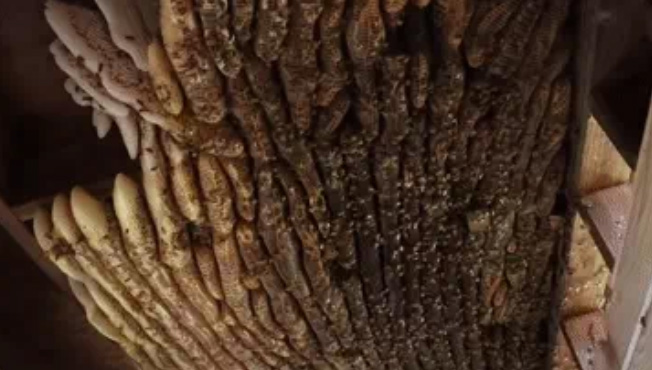On the island of Kauai in the Hawaiian archipelago, a group of people dismantled the ceiling of a cabin-style house. They discovered something surprising behind this ceiling: A massive kingdom of honeybees!
It turns out that honeybees had built their hive in the ceiling of this long-abandoned old house. However, what was most impressive was the sheer number of honeycomb cells above. They were so plentiful that they completely covered the surface of the ceiling.

Giant honeycomb on the ceiling.
The species of bee that built the hive is the honeybee (scientific name: Apis). This species is a top pollinator on the island of Kauai as well as worldwide (it is estimated that at least one-third of the food consumed by humans has been pollinated by honeybees).
In a colony of honeybees, there will be a queen bee (20 – 25 mm long, short wings, short stinger), drones (15 – 17 mm long, no stinger, large wings), and worker bees (responsible for foraging, protecting the hive, and caring for larvae, and they cannot reproduce).
Each hive, whether large or small, has only one queen bee. If there are more, swarming will occur. Large hives like the one above can contain up to 25,000 – 50,000 bees. However, thanks to their high social behavior, stability and discipline are always maintained within the colony.


















































